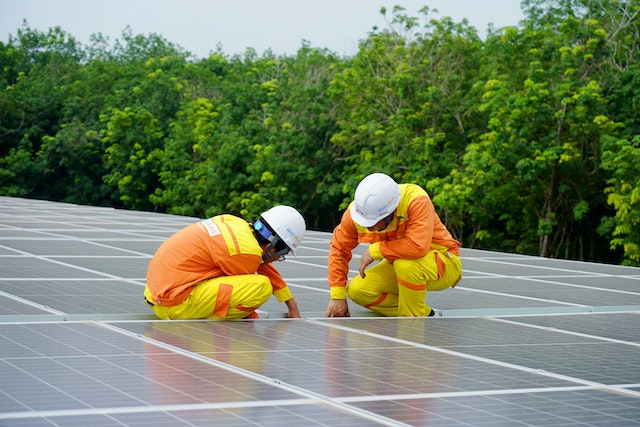Some 60,000 jobs in solar panel manufacturing and $82 billion in turbine tower production by 2050 are in the wind if Australia becomes a clean energy superpower.
Manufacturing will also get a shot in the arm from port-side construction plants, high-voltage cable needs and electric truck production under a blueprint launched by federal Jobs and Skills Minister Brendan O’Connor.
“We want to once again be a country that makes things,” he said at a TAFE in Melbourne’s Docklands on Wednesday.
Mr O’Connor said the $15 billion National Reconstruction Fund would have a vital role, with the economic and employment benefits of renewable energy to be considerable.
“Our government believes that making sure people have the right education and training is absolutely central to meeting our net zero obligations while also creating good, union jobs in our cities and regions – especially legacy fossil fuel regions,” he said.
Mr O’Connor said fee-free TAFE courses were helping create the required workforce, particularly in areas with skills shortages, and New Energy Apprenticeships Program provided $10,000 to help with cost-of-living pressures through their training.
“The program, which will run for nine years, saw more than 2000 people sign on in its first year,” he said.
“But we want to see that number increase.”
Australia must develop a comprehensive industry policy, use local content and train a workforce, according to the report commissioned by the Australian Manufacturing Workers Union, Climate Action Network Australia and the UTS Institute for Sustainable Futures.
“Becoming a renewable energy superpower will also deliver more affordable energy prices to families and businesses struggling to make ends meet with high energy costs,” union boss Steven Murphy said.
Mr Murphy said the Towards a Renewable Superpower report sets out the opportunities and actions required to get there.
But other major economies are making massive investments in sovereign capabilities and Australia is being left behind.
“An Australian equivalent of the US Inflation Reduction Act level of funding is essential if Australia is to fulfil its aspirations to be a renewable energy superpower,” according to the report.
Critical mineral refining and green hydrogen are identified as “keystones”, as they can unlock other opportunities.
“Our contribution to date has been bound up in our reputation as a ‘dig and ship’ economy, where minerals are sent offshore to produce energy and manufactured goods,” Mr Murphy said.
Co-author Chris Briggs said a fund must be established that can use targeted investment, grants and incentives such as production credits to help local companies become internationally competitive exporters.
He urged state and territory governments to use local content laws and government procurement to support new businesses.
Marion Rae
(Australian Associated Press)





